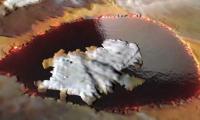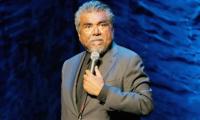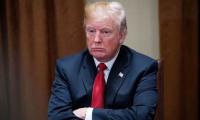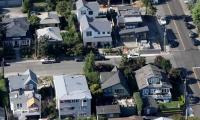Pakistan People’s Party (PPP) was launched in Lahore on November 30, 1967 at the residence of late Dr Mubashir Hasan and though its founder Zulfikar Ali Bhutto belonged to Sindh, he made Punjab as his political base, knowing fully well the importance of the biggest province.
Party always had strong roots particularly in Southern Punjab till it lost the 2013 elections. Today, when the party observed its 53rd Foundation Day, in Multan, along with other 10 parties of Pakistan Democratic Movement (PDM), its new generation tried to make a comeback with a public meeting under the shadow of fast spreading ‘coronavirus pandemic’ and State repression, which has made the show a bit controversial amid criticism from cross section of the society.
The PPP still has a long way to go and in the absence of someone like Bhutto or his daughter Benazir Bhutto, it may not be easy for young Bilawal Bhutto Zardari, who made his political debut in 2015. I am not sure whether the presence of Aseefa Bhutto, the youngest daughter of Benazir is actually her debut in practical politics or she would just represent her brother, who is in quarantine after a coronavirus positive test, a few days ago and would not be able to attend today’s meeting.
The PPP, which once had towering political figures in Punjab like late JA Rahim, the founding secretary general and the author of PPP’s ‘Basic Document,’ Dr Mubashir Hasan, Sh Rasheed (Bab-e-Socialism), Khursheed Hasan Mir, Ghulam Mustafa Khar, Malik Meraj Khalid, Sh Rafiq Ahmad or the one from the late 70s and 80s generation like Aitzaz Ahsan, late Jehangir Badr, Dr Ghulam Hussain, Mukhtar Rana and many others.
The party still has some good names in Punjab like former prime minister Yusuf Raza Gilani, its provincial president Qamar Zaman Kaira, Aitzaz Ahsan, Ch Manzoor Hussain but the dilemma is that even these leaders could not do much unless the party at the central level made a serious review of its politics in general and the causes behind its loss in Punjab after 2008.
The PPP has two challenges in Punjab. One, how to challenge the PTI and second, how to develop its relationship with the PML-N as both had strained relationships in the recent past as well. Remember the PML-N is still the single largest party in Punjab and if the PTI government fails at governance level it is the PML-N, which will benefit and not the PPP.
The latter can only make a comeback if they come out with something different to regain the lost glory, if nothing else at least to win sizable seats in Southern Punjab, once the stronghold of the PPP.
Historically the PPP was ousted from Punjab through a conspiracy hatched by the then establishment through players like late Gen Ghulam Jilani under the instruction of Gen Zia. They thought the ‘party was over’ after Bhutto’s death but later they realised it’s neither dead nor over. In search of an alternative they discovered ‘Sharifs,’ who felt wounded due to Bhutto’s
nationalisation policy as their Ittefaq Industries were also nationalised.
Through two-prong strategy, Gen Zia’s used Sindh card and nominated a Sindhi politician late Mohammad Khan Junejo as prime minister after holding elections on non-party basis in 1985. In Punjab, he pushed Sharifs and provided all kinds of support to counter the PPP.
Establishment fully backed Sharifs in Punjab and the formation of Islami Jamhoori Ittehad (IJI), the brainchild of former ISI chief Lt-Gen Hameed Gul, was to balance the rising popularity of Benazir Bhutto after her return to Lahore from self-exile on April 10, 1986.
Although the PPP always won a good number of seats both in the National and Punjab assemblies from 1988 to 2008, it could not get the top slot after 1977. The PPP finally vanished from Punjab after the 2013 elections and even lost its stronghold in Southern Punjab.
The PPP should also blame its own politics in Punjab as it provided space to the third party ie Pakistan Tehreek-e-Insaaf (PTI), which not only made inroads by targeting both Sharifs and Zardari and emerged as opposition party after the PPP and PML-N signed Charter of Democracy (CoD), and also formed a coalition government after 2008 elections but the relationship was broken over Zardari’s refusal to restore deposed chief justice, Iftikhar Mohammad Chaudhry. The two parties always have a love-hate relationship which aggravated during the PML-N’s third government in 2013.
The PTI led by Prime Minister Imran Khan caused a real dent in the PPP’s vote bank as he emerged as a main critic of the PML-N and Sharifs, which attracted the PPP workers in Punjab, which has grown up blaming Sharifs for what they did with them.
Asif Ali Zardari has his own ‘definition’ of ‘reconciliation’ as in 2008, he even developed cordial relationship with Chaudhrys of Gujrat and provided major relief to them in Moonis Elahi’s case. He also gave Pervaiz Elahi, status of deputy prime minister after the PML-N pulled out from the coalition government.
PPP Punjab leadership and workers could not find themselves in a comfortable position with the party’s relationship with either of the two (Sharifs and Chaudhrys).
Thus, in the 2013 elections the PPP thought that the PTI would damage the PML-N but on the contrary it hurt the PPP and since then they could not make a comeback.
In 2015, PPP Punjab leadership in a meeting in Dubai, indirectly blamed Zardari’s politics and image as one of the reasons of party’s popularity graph going down and people like Aitzaz Ahsan and Nadeem Afzal Chan (now in the PTI) advised Zardari to quit and hand over all powers to Bilawal Bhutto.
What happened in Multan in the last few days has certainly given some hope for the PPP to make a comeback in Southern Punjab and the way its workers played ‘hide and seek’ with the police and administration gave a glimpse of the PPP’s old ‘DNA’.
But the party’s electoral success only depends on how it changed its political narrative to be close to its basic principles. Remember even the worst critic of Zulfikar Ali Bhutto had never accused him of ‘corruption’. Same could not be said about the post-2008 leadership.
This in itself is a challenge for young Bilawal to restore the credibility of the party as well as establish and lead by example in Sindh, where the party has been in power since 2008 but big question mark on ‘governance’.
Dynastic politics has its own dynamics and has its own pros and cons particularly in a country where elections and politics both are ‘managed’ and popular leaders were removed, executed and killed in mysterious circumstances.
There is no Zulfikar Ali Bhutto or Benazir Bhutto today. One was executed, the other was assassinated. There is no doubt that it’s the only party where leaders and workers both gave their lives and sacrifices but no party or organisation could live with past history. What the party is doing at present matters and in this case the PPP will have to go a long way to regain its lost glory.
Only time will tell how Bilawal and Aseefa will be able to steer the party from the present situation to win back Punjab, from where the party began its political journey.
Interestingly all the three mainstream political parties ie Pakistan Muslim League (Nawaz), Pakistan Tehreek-e-Insaaf (PTI) and the Pakistan People’s Party were formed in Punjab’s capital Lahore. The latter been the oldest among the three had not won a single seat from the heart of Punjab since long. Can they do it now? Let’s wait and see.
The writer is a senior columnist and analyst of Geo, The News and Jang.
Twitter:@MazharAbbas
DEO briefed the participants on the ongoing drive for the enrollment of children
Air ambulance would be deployed for emergency transfer of patient: says Sarfraz Bugti
Senator Palwasha Khan criticized the behavior of the SIC during the president’s address to the Parliament asserting...
Chief Justice Aamer Farooq heard the petition filed by the former president IHC Bar Council Nayab Gardezi through his...







